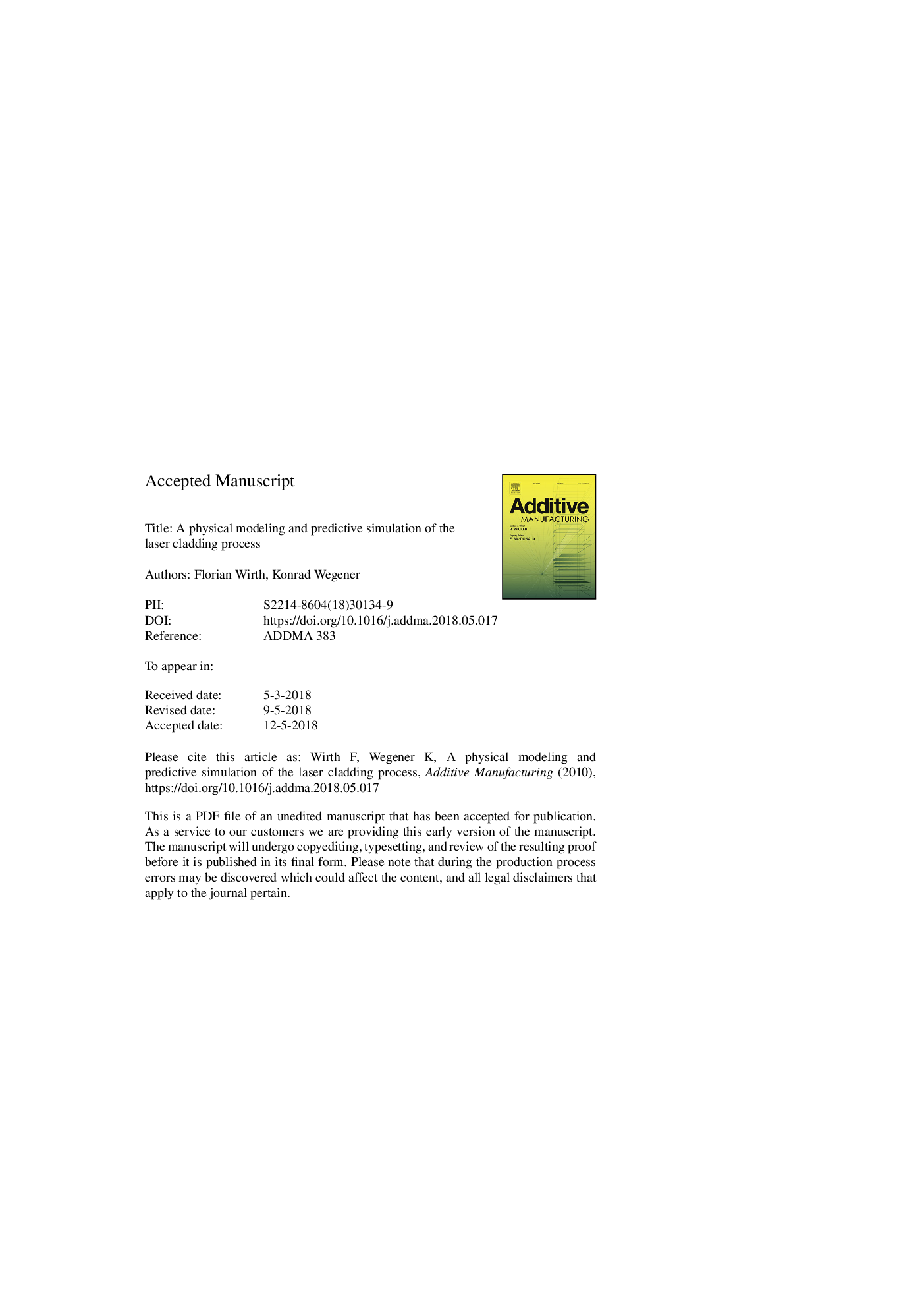| کد مقاله | کد نشریه | سال انتشار | مقاله انگلیسی | نسخه تمام متن |
|---|---|---|---|---|
| 7205752 | 1468627 | 2018 | 37 صفحه PDF | دانلود رایگان |
عنوان انگلیسی مقاله ISI
A physical modeling and predictive simulation of the laser cladding process
ترجمه فارسی عنوان
مدل سازی فیزیکی و شبیه سازی پیش بینی فرایند پوشش لایه
دانلود مقاله + سفارش ترجمه
دانلود مقاله ISI انگلیسی
رایگان برای ایرانیان
کلمات کلیدی
روکش فلزی لیزری، رسوب مستقیم فلز، تولید افزودنی، مدل سازی، شبیه سازی،
موضوعات مرتبط
مهندسی و علوم پایه
سایر رشته های مهندسی
مهندسی صنعتی و تولید
چکیده انگلیسی
A 3D finite element simulation model of the laser cladding process has been developed taking into account heat transfer, fluid flow, surface tension and free surface movement. All input parameters and data, which are independent of the process parameters but depend only on the material and machine properties, have been obtained from measurements. Thereby the melt pool and the resulting surface contour can be simulated without compromising assumptions or calibration, because the machine parameters are the only variable input parameters of the model. Thus, the model can easily be transferred to other material combinations or other machines. For the surface contour calculation a modified height function method is applied. The model surface follows this contour as an arbitrary Lagrangian Eulerian (ALE) method is used allowing for mesh deformations. The model was implemented using the commercial finite element software COMSOL Multiphysics and validated by comparing the simulation results with caloric measurements of the effective heat input and metallographic cross sections from experiments, where the nickel-base alloy MetcoClad® 625 in powder form was deposited on structural steel S235JRCâ¯+â¯C and the process parameters of laser power, feed speed, laser beam spot size and powder mass flow were varied within a range of at least 50% of their mean value each. The maximum deviation of the simulation results compared to the experimental data regarding track geometry is 14% for the parameter sets without weld defects so that these parameter sets could be industrially applied, whereas the average deviation of track width and height is below 5.1%. Moreover, the maximum difference of the simulated absorptivity compared to the measurement results is 6.9%, while the average difference is only 1.7%, meaning the model shows a high predictive capability especially regarding the heat input.
ناشر
Database: Elsevier - ScienceDirect (ساینس دایرکت)
Journal: Additive Manufacturing - Volume 22, August 2018, Pages 307-319
Journal: Additive Manufacturing - Volume 22, August 2018, Pages 307-319
نویسندگان
Florian Wirth, Konrad Wegener,
